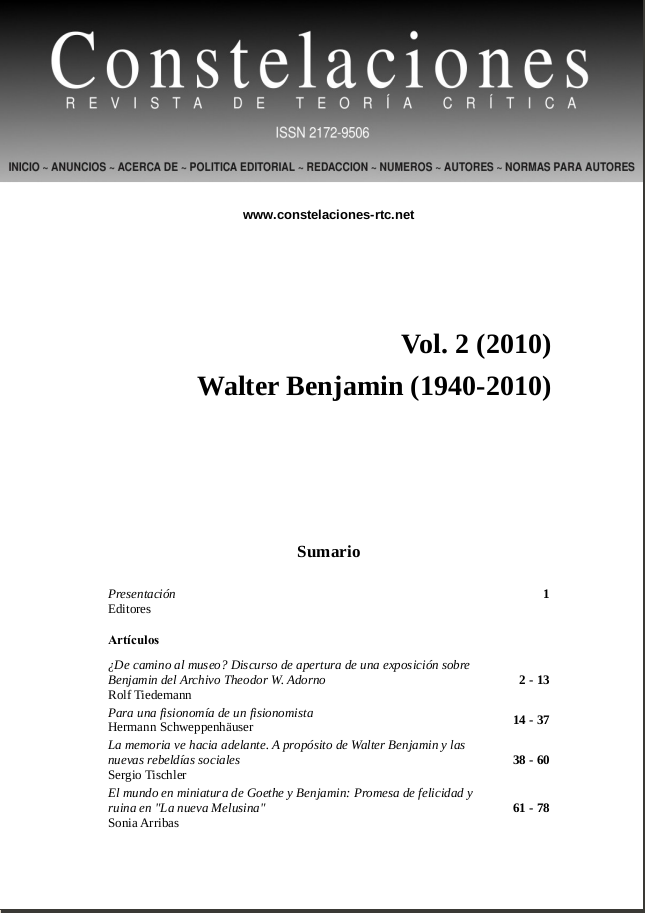Allegory and Montage. The Work of the Fragment in Walter Benjamin
Keywords:
Walter Benjamin, allegory, montage, image, fragmentAbstract
Walter Benjamin ?s concept of history journeys across different theoretical and political states. Although in all of them he decidedly criticizes any Hegelian idealization of history's passive material, he does so from very different theoretical angles. In this paper we demarcate two key conceptualizations in history ?s disruption: the concept of“allegory”, coined in his work about the German tragic drama (and displayed in his works about Baudelaire), and the idea of “montage” inspired by constructivist avant-garde (and new ways of technical art). Two decisive features join these two concepts: the critique of any symbolic or totalizing conception about significance and its special performance in thinking the image problem. Nevertheless, there is a slight difference between them: if allegory is understood as a protest that dismisses every significance regime above suffering and lack of sense, montage is a building option that lasts after totality is dismantled. However, Benjamin sustains in his late work the tension between both of them. This shows us, on the one hand a Benjamin that tries to avoid an unilateral interpretation, but on the other, this fluctuation between the allegory ?s melancholic dismissal, its fixation in the loss, and montage ?s constructivist passion, its commitment with a work (of grief), “tightens the arch” of contemporary debates about “memory” and “horror ?s representation”.Downloads
Downloads
Published
How to Cite
Issue
Section
License
Authors who have publications with this journal accept the following terms:
1. Authors will retain their copyright and grant the journal the right of first publication of their work, which will be simultaneously subject to the License of recognition of Creative Commons CC BY-NC-SA 4.0 that allows third parties to share, redistribute and adapt the work provided it is for non-commercial purposes and its author and first publication in this journal is indicated.
2. Authors may adopt other non-exclusive distribution license agreements for the version of the published work (e.g., depositing it in an institutional electronic archive or publishing it in a monographic volume) provided that the initial publication in this journal is indicated.
3. Authors are permitted and encouraged to disseminate their work via the Internet (e.g., in institutional telematic archives or on their website) before and during the submission process, which can produce interesting exchanges and increase citations of the published work. (See The Effect of Open Access).
Data confidentiality
1. Constelaciones. Revista de Teoría Crítica guarantees that the data you send us will only be used to meet the requests made in this message.
2. Your data will not be passed on to third parties.
3. You may request that your data be removed from our records at any time.





